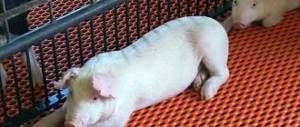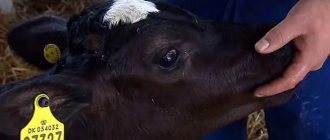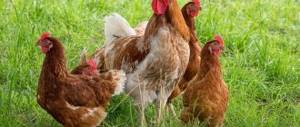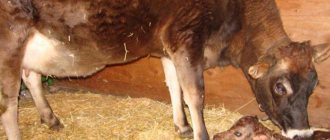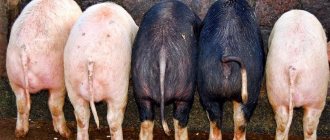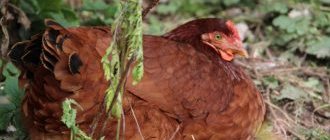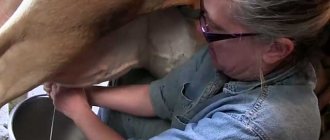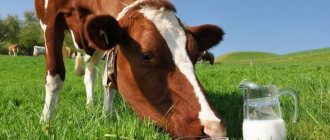I. General provisions
This Privacy Policy Statement (hereinafter referred to as the Statement) is an official document of Agroplanet LLC, located at: 426019, Udmurt Republic, Izhevsk, st. Regional, 6, office. No. 5. (hereinafter referred to as “), and determines the procedure for processing and protecting information about individuals (hereinafter referred to as Users) using services, information, services, programs (including loyalty programs) and products of the online store located on the domain name www .agroplaneta18.ru (hereinafter referred to as the Site).
Maintaining confidentiality is important for the Company, because the purpose of this Privacy Policy is to ensure the protection of the rights and freedoms of individuals and citizens when processing their personal data, including the protection of the rights to privacy, personal and family secrets, from unauthorized access and disclosure.
We have developed a Privacy Policy that describes how we process personal data - any actions (operations) or a set of actions (operations) performed using automation tools or without the use of such tools with personal data, including collection, recording, systematization, accumulation, storage, clarification (updating, changing), retrieval, use, transfer (distribution, provision, access), depersonalization, blocking, deletion, destruction of personal data.
Relations related to the processing of personal data and information about users of the Site are regulated by these Regulations, other official documents of the Operator and the current legislation of the Russian Federation
We process personal data lawfully and fairly, acting reasonably and in good faith and based on the principles:
— legality of the purposes and methods of processing personal data; - integrity; — compliance of the purposes of processing personal data with the goals predetermined and stated when collecting personal data, as well as with the powers of the Company; — compliance of the volume and nature of the personal data processed, methods of processing personal data for the purposes of processing personal data
This Privacy Policy governs any type of processing of personal data and personal information (any personally identifiable information and any other information related thereto) about individuals who are consumers of the Company's products or services.
This Policy applies to the processing of personal, personal data collected by any means, both active and passive, both through the Internet and without its use, from persons located anywhere in the world.
II. Collection of personal data
The purpose of processing personal data is to fulfill the Operator’s obligations to Users regarding the use of the Site and its services.
The processing of users' personal data is carried out with the consent of the subject of personal data to the processing of his personal data.
Personal data means any information relating to a directly or indirectly identified or identifiable individual (personal data subject) and which can be used to identify or contact a specific person.
We may request personal information from you at any time you contact the Company. The Company may use such data in accordance with this Privacy Policy. It may also combine such information with other information for the purpose of providing and improving its products, services, content and communications.
Below are some examples of the types of personal information that the Company may collect and how we may use such information.
WHAT PERSONAL DATA WE COLLECT
We may collect a variety of data/information including:
— first and last name, — postal address; - phone number; - E-mail address;
Personal data may also include additional information provided by Users at the request of the Operator in order for the Operator to fulfill its obligations to Users arising from the contract for the provision of services. The Operator has the right, in particular, to request from the User a copy of an identity document or other document containing the User’s first name, surname, photograph, as well as other additional data that, at the Operator’s discretion, will be necessary and sufficient to identify such User and will allow exclude abuse and violation of the rights of third parties.
When you attract others to our events and activities or invite them to communicate with us, the Company may collect personal information about these individuals that you provide, such as first name, last name, date of birth, postal address, email address and telephone number.
When processing personal data, we ensure the accuracy of personal data, their sufficiency, and, where necessary, relevance in relation to the purposes of processing personal data.
How to fall correctly
If you lose your balance and fall, try:
- squat
down as low as possible to reduce the height of the fall; - group
- thanks to this, the force of impact during a fall will decrease. Moreover, it will be better to group if you let go of the bag and other objects in them from your hands - the objects can then be collected, and at the moment of falling you need to save yourself, not them. Remember that any “protruding” limb will take on all the kinetic energy of the impact on the ice - and this greatly increases the risk of fractures; - tense your muscles
. Recommendations to relax the body at the moment of falling are wrong, since in this case the bones will take the entire blow, which can lead to fractures. But with tense muscles, the chance of getting away with only bruises increases significantly.
Yes, at the moment of the actual “flight” onto bare ice, it is quite difficult to follow all these recommendations, since such a moment lasts a fraction of a second. But it’s still worth remembering these rules - perhaps in a critical situation the brain will send the body a signal of the correct action.
The safest fall is on your side
. In this case, most likely, the bones will not be damaged - especially if you have time to group and tense your muscles.
But if you fall on your face
(facing forward) - first, try not to land with your arms outstretched, tuck your elbows to your sides. Ideally, your head will be pulled into your shoulders, your back will be straight, and your legs will be bent in a semi-squat.
If you fall on your back
, it’s good if your chin is pressed to your chest and your arms are spread out to the sides. In general, falling on your back and hitting the back of the head are the most dangerous, as they are fraught with damage to the spine and traumatic brain injuries.
III. Storage and use of personal data
Users’ personal data is stored exclusively on electronic media and processed using automated systems, except in cases where non-automated processing of personal data is necessary in connection with compliance with legal requirements.
HOW WE USE YOUR PERSONAL INFORMATION
The personal data we collect allows us to send you notifications about new products, special offers and various events. They also help us improve our services, content and communications. If you do not wish to be included in our mailing list, you can unsubscribe at any time by informing us at the specified contacts for feedback, as well as making changes in your profile settings on the site.
From time to time, we may use your personal information to send important notices containing information about changes to our terms, conditions and policies, and confirming orders you have placed and purchases you have made. Because such information is important to your relationship with the Company, you may not opt out of receiving such communications.
We may also use personal information for internal purposes, such as conducting audits, data analysis and various studies in order to improve the Company's products and services, as well as interact with consumers.
If you participate in a prize draw, contest or similar promotion, we reserve the right to use the personal information you provide to administer such programs.
COLLECTION AND USE OF NON-PERSONAL INFORMATION
We also collect non-personal personal information - information that cannot be directly associated with any specific person. We may collect, use, transfer and disclose non-personal information for any purpose. The following are examples of non-personal information we collect and how we may use it:
We may collect personal information such as occupation, language, zip code, unique device identifier, location and time zone in which a product is used in order to better understand consumer behavior and improve our products, services and communications.
We may also collect personal data/information about what the user is interested in on our website when using our other products and services. Such personal data/information is collected and used to help us provide more useful information to our customers and to understand which parts of our site, products and services are most interesting. For the purposes of this Privacy Policy, aggregate data is considered non-personal data/information.
If we combine non-personal information with personal information, the combined information will be treated as personal information for as long as the information is combined.
Major diseases
All farmers who understand their business know that for good health and high productivity of cows, it is necessary to provide them with safe housing and balanced feed. The absence of one or another factor leads to infection of livestock with one or another serious ailment. It is for this reason that the first step is to ensure comfortable and prosperous conditions for keeping cows. In most cases, a cow cannot stand on her feet due to the following joint diseases:
- Stretching
- Dislocation
- Arthritis
- Arthrosis
The disease also occurs due to problems with the hooves of cattle. The main and most common are:
- Fusabacteriosis
- Erosion
- Laminitis
Each farmer needs to be familiar with the description of each of the listed diseases so that, if necessary, they can navigate and understand when the inevitable help of a veterinarian is needed.
IV. Transfer of personal data
Personal data of Users is not transferred to any third parties, except as expressly provided for in these Rules.
The processing of the User's personal data is carried out without a time limit, in any legal way, including in personal data information systems using automation tools or without the use of such tools
The User agrees that the Operator has the right to transfer personal data to third parties, in particular, courier services, postal organizations, telecommunication operators, etc., solely for the purposes specified in the “Collection of Personal Data” section of this Privacy Policy
When specifying the user or with the user's consent, it is possible to transfer the User's personal data to third party counterparties of the Operator, subject to the acceptance by such counterparties of obligations to ensure the confidentiality of the information received, in particular when using applications.
Applications used by Users on the Site are hosted and supported by third parties (developers) who act independently of the Operator and do not act on behalf of or on behalf of the Operator. Users are required to independently familiarize themselves with the terms of service and personal data protection policies of such third parties (developers) before using the relevant applications.
The User’s personal data may be transferred at the request of authorized government bodies of the Russian Federation only on the grounds and in the manner established by the legislation of the Russian Federation.
The Operator blocks personal data relating to the relevant User from the moment of application or request from the User or his legal representative or the authorized body for the protection of the rights of personal data subjects for the period of verification, in the event of detection of unreliable personal data or unlawful actions.
DISCLOSURE OF INFORMATION TO THIRD PARTIES
In some cases, the Company may share certain personal information and data with strategic partners who work with the Company to provide products and services, or those who assist the Company in marketing products and services to consumers. We provide third parties with the minimum amount of personal data necessary only to provide the required service or conduct the required transaction.
Personal information will be provided by the Company only for the purpose of providing consumers with products and services, as well as to improve these products and services, and communications related thereto. Such information will not be provided to third parties for their marketing purposes.
To use your personal data for any other purpose, we will request your Consent to the processing of your personal data.
SERVICE PROVIDERS
The Company provides personal data/information to Companies that provide services such as: processing information, providing loans, fulfilling consumer orders, delivery, other types of consumer services, determining your interest in our products and services, conducting surveys aimed at studying our consumers or satisfaction quality of service. Such companies are committed to protecting your information regardless of their country of location.
OTHER PERSONS
The Company may be required by law, legal process, legal proceedings and/or on the basis of public requests or requests from government authorities in or outside the country of your residence to disclose your personal data. We may also disclose personal data/information about you if we determine that such disclosure is necessary or appropriate for purposes of national security, law enforcement or other matters of public importance.
We may also disclose personal data/information about you if we determine that disclosure is necessary to enforce our terms and conditions or to protect our business and our users. Additionally, in the event of a reorganization, merger, or sale, we may transfer any or all of the personal information we collect to the applicable third party.
The cow does not get to her feet after calving: what to do?
Sometimes, even in a healthy pregnant cow, labor can be long and difficult. Moreover, in some cases it happens that the cow does not get up after calving.
Observing this phenomenon, many inexperienced breeders do not see this as a serious problem, and try in various ways to put the animal on its feet.
Meanwhile, there may be quite a lot of reasons for such behavior on his part. And before taking measures, it is better to study them well.
Description of the disease
It is worth immediately noting that in most cases, the cause of an animal’s refusal to rise to its feet after calving is serious health problems. Childbirth, especially protracted ones, creates a colossal load on the animal’s pelvis.
Quite often, the emerging fetus can strongly compress the gluteal nerve or the nerve endings of the sacral spine. Due to increased pressure, they are damaged, which disrupts the flow of signals to the leg muscles.
The result is paralysis of the hind limbs.
Signs
Symptoms when a cow refuses to stand after calving vary depending on the specific cause. So, with postpartum paresis in an animal the following can be observed:
- severe clouding of the cornea;
- tremors and cramps of the limbs;
- excessive salivation (in some forms of the disease);
- the neck constantly turns to one side;
- general oppression.
The most striking signs of mastitis are:
- a sharp increase in temperature;
- decreased appetite, which can lead to complete refusal of food;
- lethargy and depression prevail in behavior.
It is extremely important to identify metritis at the beginning of its development. Otherwise, the disease may be fatal
Its main symptoms, in addition to the fact that the cow does not get up, include the following:
- temperature increase;
- rapid breathing and heart rate;
- refusal of food and water;
- disturbances in the intestines, manifested by severe diarrhea or constipation;
- delay of placenta
A lack of phosphorus in a cow’s body manifests itself in almost the same way as postpartum paresis. But still, there are some differences. First of all, the animal makes attempts to get up, but due to weakness it falls to the ground again. Appetite does not decrease. The forelimbs are as weak as the hind limbs.
Medication
Drug treatment is prescribed only after an accurate diagnosis of the disease by a veterinarian. If postpartum paresis is diagnosed, subcutaneous injections of caffeine and a solution of magnesium sulfate are immediately prescribed. Intravenous injections of glucose and calcium chloride (10% solution) also help.
Often, in addition to this, inflating the udder nipples with air using the Evers apparatus is prescribed. In this case, the cow is laid on its side, and after the procedure is completed, the teats are wrapped in a bandage.
Inflating the udder nipples with air
For mastitis, treatment is carried out with a solution of sodium chloride, in which a certain amount of novocaine is dissolved. Ichthyol ointment helps relieve inflammation.
If hypophosphatemia is detected, injections of the drug Urzolit are prescribed. The dosage is 100 ml for every 100 kg of cow weight. A solution of calcium hypophosphite gives a good effect.
Often medications with a high content of vitamin E are also added to the general course of treatment. They ensure faster healing of damaged tissues and help stop the inflammatory process. In some cases, steroids may be prescribed.
Attention! For the entire duration of treatment of a sick animal, it is provided with a special diet - calcium and phosphorus salts are necessarily added to the food. Vitamin supplements, glucose and fish oil are also used
All feed is finely ground before serving to livestock. You can add warm water with sugar diluted in it to the resulting composition.
Conclusion
Refusal to stand on her feet after calving in any case is evidence of serious health problems with the cow.
Therefore, independent attempts to get her back on her feet are only a last resort when there is nowhere to wait for help. In all other situations, you must immediately call a veterinarian.
Treatment cannot be started without his knowledge. Only if such conditions are met will it be possible to save both the cow and the calf.
V. Destruction of personal data
The user's personal data is destroyed when:
— the User’s own deletion of data from his personal page using the “delete account” functionality available to the User using profile settings; — removal by the Operator of information posted by the User, as well as the User’s personal page in cases established by the purchase and sale agreement (offer); — when the subject of personal data withdraws consent to the processing of personal data.
IDENTIFICATION FILES (COOKIES) AND OTHER TECHNOLOGIES
The Website, interactive services and applications, email messages and any other communications on behalf of the Company may use identification cookies and other technologies, such as pixel tags, web beacons. Such technologies help us better understand user behavior, tell us which parts of our site have been visited by users, and measure the effectiveness of advertising and online searches. We consider information collected by cookies and other technologies to be non-personal information.
Our goal in such cases is to provide a more convenient and personal interaction with the Company. For example, knowing your name, we can use it in our communications. By knowing that someone using your computer or device has purchased a particular product or used a particular service, we can make advertising and email messages more tailored to your interests. Ultimately, all this knowledge helps us provide you with the highest quality service.
If you can disable cookies in the settings of the web browser or mobile device you use. Please note that some functions of the website may become unavailable after cookies are disabled.
As with most websites, we collect some information automatically and store it in statistics files. This information includes Internet Protocol (IP) address, browser type and language, Internet service provider, referring and exit pages, operating system information, date and time stamp, and clickstream information. We use such information to understand and analyze trends, administer the site, study user behavior on the site, and gather demographic information about our general user population as a whole. The Company may use such information for its marketing purposes.
In some of our email messages, we use clickable links to information posted on the Company's website. When users click on such links before they reach the destination page on our website, their requests are separately registered. We track such "pass" data to help us gauge interest in specific topics and measure the effectiveness of our communications with consumers. If you would prefer not to have your communications tracked in this way, you should not click on text or image links in email messages.
Pixel labels allow us to deliver email messages in a consumer-readable format and tell us whether such messages have been read. We may use such information to limit or stop communications that we send to consumers.
Read more about cookies.
Lifting assistance
If an animal has suffered nervous paralysis, you need to help it at all costs so that it can get up, despite being tired. The calf should be kept away from the mother so that she cannot fall on it. Help comes from several people. Some should stand on the side where the tail is, others on the side where the cow’s head is.
The cow's tail curls, be sure to be careful so that the animal does not get hurt. You need to grab the tail in the middle. In a twisted form, it is held for 10 to 20 seconds until the cow begins to stand up.
Advice: You can try to raise the female with the help of loud sounds, which will act on her irritatingly and frighteningly, at the same time invitingly. But not all cows can get up from clapping, stomping, screaming; among animals, like people, there are also braver individuals.
It may seem cruel, but effective, a method of imaginary strangulation of an animal. For 10 to 20 seconds, the individual should remain with its mouth and nose closed; human hands will help prevent breathing. There is also shock therapy from the action of current; it should be used only as a last resort. An electric drive can make a cow rise when it touches the area under the tail.
When the cow began to stand up, its tail was not released from the hands. If a cow falls, she may break or dislocate her limbs. The nurse should be kept in a standing position for as long as possible.
Advice: If the cow falls on her hind legs again, take several breaks between treatments so that the animal can rest and gain at least a little strength.
When the nurse, after getting up, remains on her feet for a long time, before leaving her next to the calf, make sure that the mother stands and walks firmly, can turn around, that is, the calf will be safe to be with her.
It happens that the necessary measures have been taken, but the nurse is unable to get up. It's good to help her position herself in a comfortable way. Having tried to produce milk, they feed it to the calf. You can bring the baby to the animal’s udder and hold it until it’s full. If the uterus is closed in a stall, the newborn is kept separately in a warm place, he is brought to the uterus to be fed, and taken away.
When the cow wants to get up, trying on its own, a strong cord is wrapped around its legs from behind and left tied for a while. Otherwise, the animal may tear muscles or get dislocated.
Advice: A sick individual should be turned on the other side at short intervals so that bedsores cannot form, paralysis does not progress, and the muscles do not harden.
To more strongly hold the animal from independently trying to stand up, its body is wrapped in a circular pattern with wide belts. The places behind the elbow joints of the front legs and the back part are fastened. You can use special lifts that can be used to clamp and lift the pelvis of the cow’s body. A sick individual can roll over 2 times during the day.
VI. Protection of personal information
The company takes precautionary measures - including legal, organizational, administrative, technical and physical - to ensure the protection of your personal data in accordance with Art. 19 of the Federal Law of July 27, 2006 N 152-FZ “On Personal Data” in order to ensure the protection of the User’s personal data from unauthorized or accidental access to it, destruction, modification, blocking, copying, distribution, as well as from other unlawful actions of third parties.
When you use certain of the Company's products, services or applications or post on forums, chats or social networks, the personal information you provide is visible to other users and can be read, collected or used by them. You are responsible for the personal data you choose to provide in such cases yourself. For example, if you provide your name and email address in a forum post, that information is public. Please take precautions when using such features.
INTEGRITY AND PRESERVATION OF PERSONAL INFORMATION
By interacting with the Company, you can easily keep your personal data and information up to date. We will retain your personal data and information for the period necessary to fulfill the purposes described in this Privacy Policy, unless a longer retention period for data and information is required or permitted by law.
We do not collect personal information from minors. If we become aware that we have collected personal information about a minor, we will take steps to delete such information as quickly as possible.
We strongly recommend that parents and other persons under whose supervision there are minors (legal representatives - parents, adoptive parents or guardians) monitor the use of websites by minors.
THIRD PARTY SITES AND SERVICES
The Company's websites, products, applications and services may contain links to the websites, products and services of third parties. Our products and services may also use or offer products or services of third parties. Personal data and information collected by third parties, which may include information such as location data or contact information, is subject to the privacy practices of such third parties. We encourage you to review the privacy practices of such third parties.
The Operator is not responsible for the actions of third parties who, as a result of using the Internet or the Site Services, gained access to information about the User and for the consequences of using data and information that, due to the nature of the Site, are available to any Internet user.
MAINTAINING YOUR PRIVACY AT THE COMPANY LEVEL
In order to make sure that your personal data is safe, we communicate confidentiality and security standards to Company employees and strictly monitor compliance with confidentiality measures within the Company.
PRIVACY QUESTIONS
If you have any questions regarding the Company's Privacy Policy or the Company's processing of data, you can contact us using our feedback contacts.
Description of the disease
It is worth immediately noting that in most cases, the cause of an animal’s refusal to rise to its feet after calving is serious health problems.
Childbirth, especially protracted ones, creates a colossal load on the animal’s pelvis. Quite often, the emerging fetus can strongly compress the gluteal nerve or the nerve endings of the sacral spine. Due to increased pressure, they are damaged, which disrupts the flow of signals to the leg muscles. The result is paralysis of the hind limbs. There are several reasons for this phenomenon. Quite often, damage to the nerve endings occurs due to the fact that the fetus has developed too large and it is difficult for it to pass through the birth canal. The reason may also be that the pelvic region of the animal’s body is too narrow or certain defects in its structure.
Paralysis of the animal's hind legs may be a consequence of the development of postpartum paresis. This disease occurs in dairy cows when they are fed an unbalanced diet during pregnancy. The result is a severe calcium deficiency, leading to paralysis. Moreover, not only the legs, but also the intestines and tongue can be paralyzed.
In addition to postpartum paralysis, in some cases this phenomenon is provoked by other diseases, including:
- Inflammation of the mammary gland (mastitis) due to the ingestion and development of streptococcus or staphylococcus bacteria. The reason for the appearance may be non-compliance with the rules of caring for a cow during pregnancy.
- Various forms of metritis. With this disease, the animal's uterus becomes very inflamed. And during the birth process, serious damage can be traced. In this case, any movement of the back of the body is accompanied by severe pain.
- Hypophosphatemia. A lack of phosphorus in a cow’s body leads to its rapid weakening. Excessive stress during childbirth aggravates the situation and the animal does not have enough strength to get up.
In some cases, the cow may not rise due to a dislocated hip joint or a crack in the femur. In this case, any independent measures can lead to irreversible damage, including permanent fracture of the femur and rupture of the articular capsule of the femoral joint, and the animal will have to be slaughtered.
Symptoms when a cow refuses to stand after calving vary depending on the specific cause. So, with postpartum paresis in an animal the following can be observed:
- severe clouding of the cornea;
- tremors and cramps of the limbs;
- excessive salivation (in some forms of the disease);
- the neck constantly turns to one side;
- general oppression.
The cow's neck is turned
The most striking signs of mastitis are:
- a sharp increase in temperature;
- decreased appetite, which can lead to complete refusal of food;
- lethargy and depression prevail in behavior.
It is extremely important to identify metritis at the beginning of its development. Otherwise, the disease may be fatal
Its main symptoms, in addition to the fact that the cow does not get up, include the following:
- temperature increase;
- rapid breathing and heart rate;
- refusal of food and water;
- disturbances in the intestines, manifested by severe diarrhea or constipation;
- delay of placenta
A lack of phosphorus in a cow’s body manifests itself in almost the same way as postpartum paresis. But still, there are some differences. First of all, the animal makes attempts to get up, but due to weakness it falls to the ground again. Appetite does not decrease. The forelimbs are as weak as the hind limbs.
